Jinyang An
RealEra: Semantic-level Concept Erasure via Neighbor-Concept Mining
Oct 11, 2024

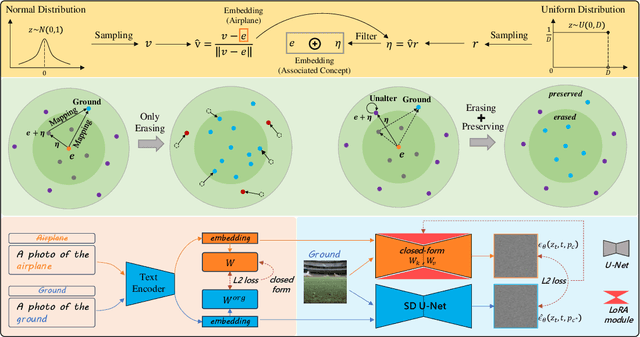
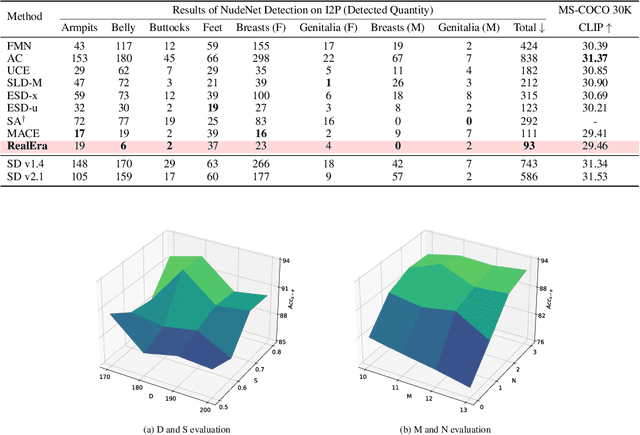
Abstract:The remarkable development of text-to-image generation models has raised notable security concerns, such as the infringement of portrait rights and the generation of inappropriate content. Concept erasure has been proposed to remove the model's knowledge about protected and inappropriate concepts. Although many methods have tried to balance the efficacy (erasing target concepts) and specificity (retaining irrelevant concepts), they can still generate abundant erasure concepts under the steering of semantically related inputs. In this work, we propose RealEra to address this "concept residue" issue. Specifically, we first introduce the mechanism of neighbor-concept mining, digging out the associated concepts by adding random perturbation into the embedding of erasure concept, thus expanding the erasing range and eliminating the generations even through associated concept inputs. Furthermore, to mitigate the negative impact on the generation of irrelevant concepts caused by the expansion of erasure scope, RealEra preserves the specificity through the beyond-concept regularization. This makes irrelevant concepts maintain their corresponding spatial position, thereby preserving their normal generation performance. We also employ the closed-form solution to optimize weights of U-Net for the cross-attention alignment, as well as the prediction noise alignment with the LoRA module. Extensive experiments on multiple benchmarks demonstrate that RealEra outperforms previous concept erasing methods in terms of superior erasing efficacy, specificity, and generality. More details are available on our project page https://realerasing.github.io/RealEra/ .
Disrupting Diffusion: Token-Level Attention Erasure Attack against Diffusion-based Customization
May 31, 2024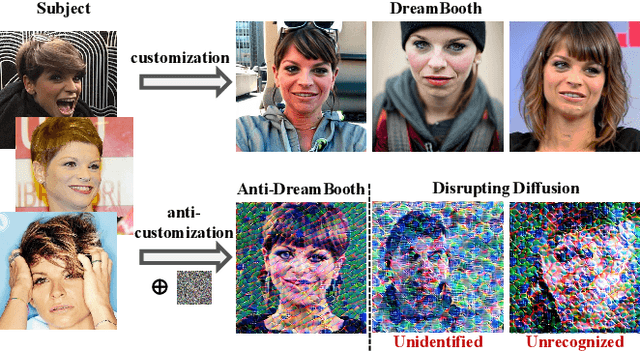
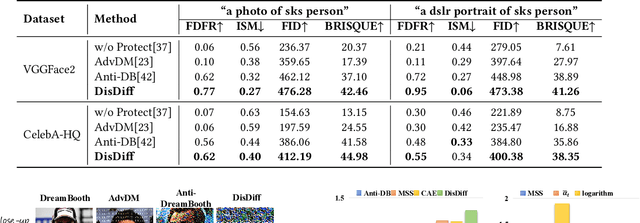
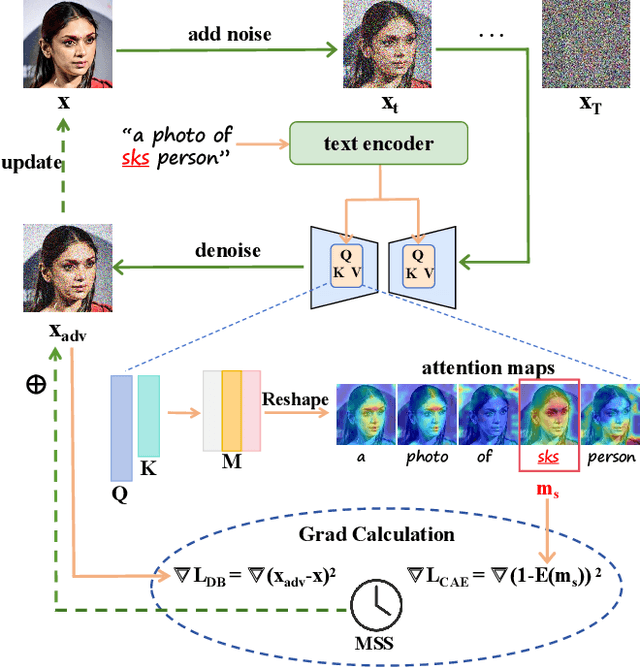
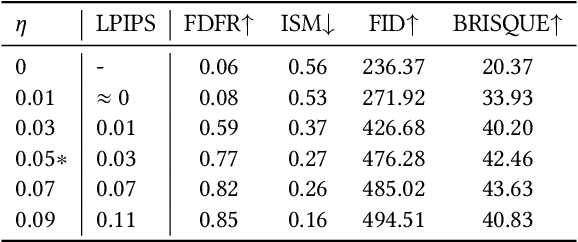
Abstract:With the development of diffusion-based customization methods like DreamBooth, individuals now have access to train the models that can generate their personalized images. Despite the convenience, malicious users have misused these techniques to create fake images, thereby triggering a privacy security crisis. In light of this, proactive adversarial attacks are proposed to protect users against customization. The adversarial examples are trained to distort the customization model's outputs and thus block the misuse. In this paper, we propose DisDiff (Disrupting Diffusion), a novel adversarial attack method to disrupt the diffusion model outputs. We first delve into the intrinsic image-text relationships, well-known as cross-attention, and empirically find that the subject-identifier token plays an important role in guiding image generation. Thus, we propose the Cross-Attention Erasure module to explicitly "erase" the indicated attention maps and disrupt the text guidance. Besides,we analyze the influence of the sampling process of the diffusion model on Projected Gradient Descent (PGD) attack and introduce a novel Merit Sampling Scheduler to adaptively modulate the perturbation updating amplitude in a step-aware manner. Our DisDiff outperforms the state-of-the-art methods by 12.75% of FDFR scores and 7.25% of ISM scores across two facial benchmarks and two commonly used prompts on average.
 Add to Chrome
Add to Chrome Add to Firefox
Add to Firefox Add to Edge
Add to Edge